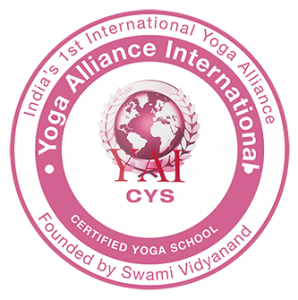The seminar of conscious breathing breathwork/pranayama 200h
The breathwork/pranayama seminar moves along two axes. One axis concerns the mental understanding of the function of breathing on a physical and psychological level. The other axis concerns the experiential work on our personal trauma of the first breath, which determines the subsequent evolution of our breathing and our attitude towards life. The purpose of this seminar is for the entire philosophy of yoga to become applied experiential knowledge and thus become a tool for self-improvement and healing.
Seminar Material:
● Breathing and respiratory system
● Function of breathing in the physical, psychological and energy body
● Pranayama techniques
● Technique of breathwork/higher pranayama, merged breathing
● What is mind, ego, higher self and lower self
● Metaphysics (implementation process)
● Emotion and emotional mind
● Subconscious and unconscious
● Prenatal and perinatal psychology/Hereditary or genealogical trauma (karma)
● The trauma of the first breath
● Personal lie and negative beliefs/samkaras
● Therapeutic writing
● Forgiveness exercises
● Dharma: the purpose of the soul, the unique gift each person brings to the world
● Work as an offering to the universe and society/seva
● Creating abundance and prosperity
● The relationship with God
● Love relationships/relationships as a basis for human development
● Yamas and Niyamas
● Anatomy of the physical and energy body
● The influence of the energy body on the physical
● Subconscious death urge
● The source of the disease
● Fears, phobias, stress management
● The therapeutic relationship
● The dynamic between therapist and client/teacher and student
● The 5 elements of nature and purification through them
● Breathing in water (hot water and cold water rebirthing)
● healing conscious (sattva) nutrition
Notes
● You will be given a bibliography and a textbook with the material you will be taught
200h Basic Level Guide
Breathwork training is aimed at people who want to improve their quality of life and promote self-awareness and self-healing. To complete the program, the following conditions must be met:
- Attendance of 100% of seminar hours, one weekend per month, 8 hours per day, from November to July
- In case of forced absence, it is made up with individual sessions, which are charged in addition to the cost of the training, 35 euros per hour
- The total cost must be paid one month before the end of the program
- The program includes 2 two days that will be held outdoors, for working with the element of fire and water respectively
- People who choose to attend online will need to have 3 live attendances, the first meeting, and the two outdoor meetings
- The cost corresponds exclusively to the total hours of the seminar
Advanced Breathwork/Pranayama group
Advanced breathwork/pranayama is a 3-year experiential group. In these 3 years we will deepen, one year in Dharma, one year in our relationship with money and one year in love relationships.
More specifically, we will move along the following axes:
- Self-care and incorporating breathing into your daily routine
- Intuition & Awareness
- Being present in the moment
- Self esteem
- Self-responsibility and emotional maturity
- Professional responsibility
- Identifying dependencies
- Intimacy in relationships
- Cooperation and commitment
- Five items
- Stages of a breathing session
- The role of energy, energy as a vehicle for thoughts and feelings
- Energy movement with breath
- Variety of experiences e.g. pain, yawning, ecstasy, tetany, arrested breathing, etc.
- Recognizing emotions in breathing
- Intuition its advantages and limitations
- Touch
- Verbal interventions
- Creative power of beliefs
- Active hearing
- Body language and what happens to the body during expression, eye contact
- Depression
- Fear & Phobias
- Addictions
- Mourning
- Anger
- Spirituality
- Family dynamics
- Morality
- LimitsAnti-transfer
- Projection
- Awareness

